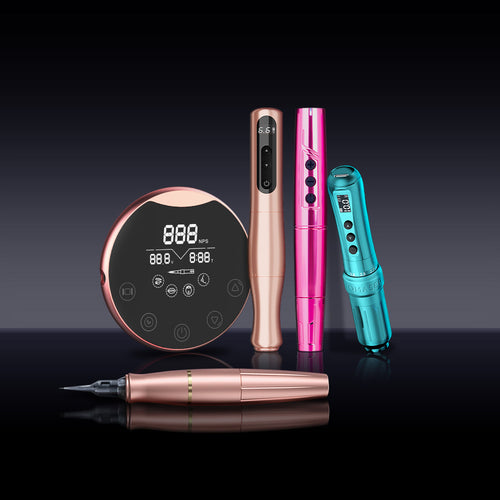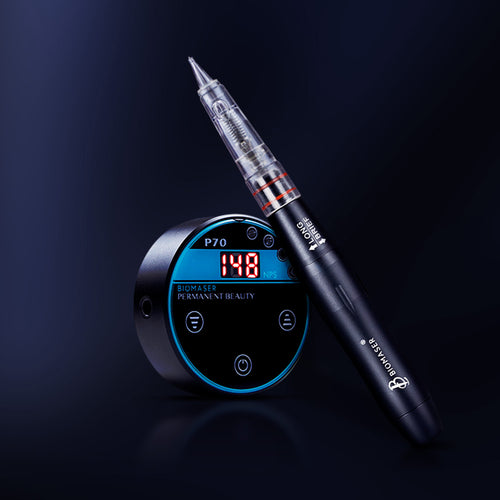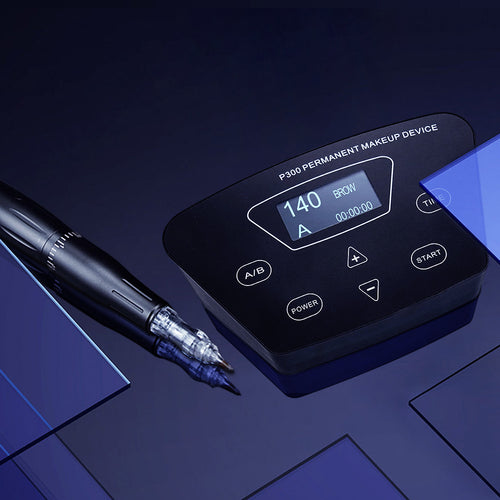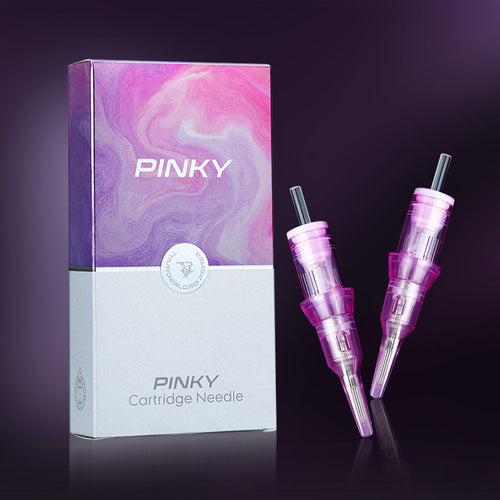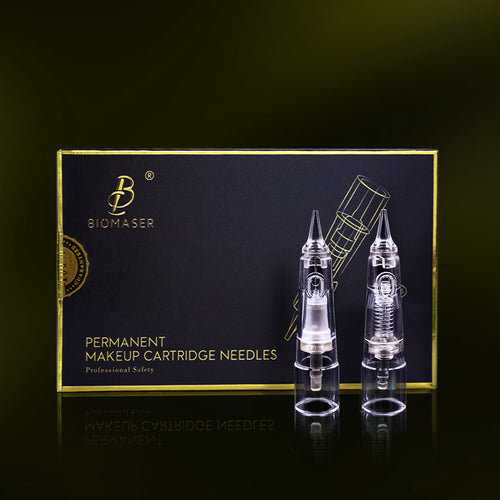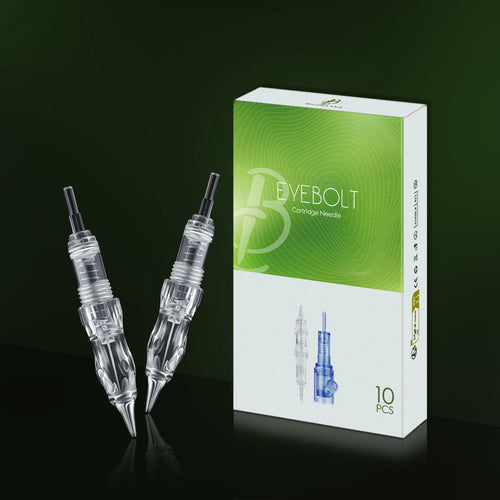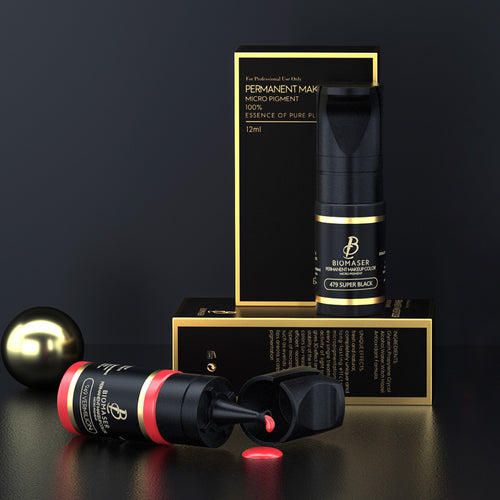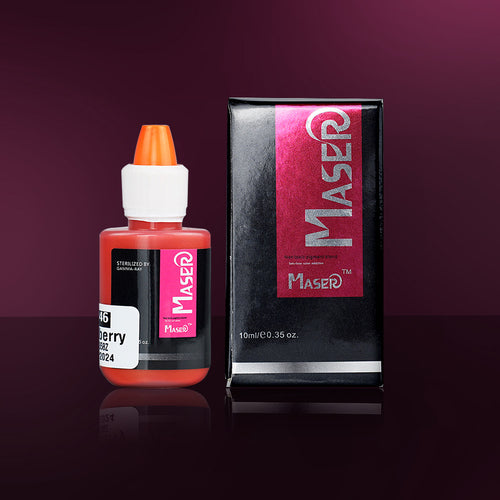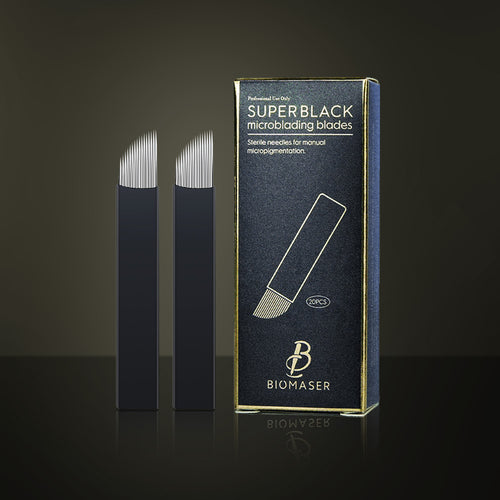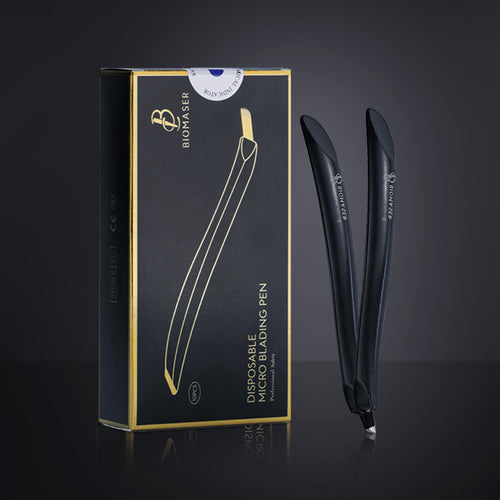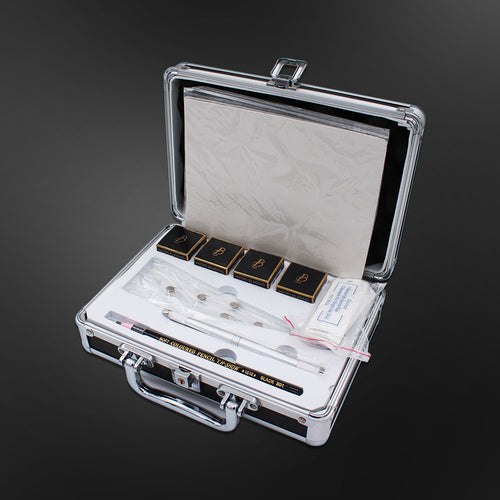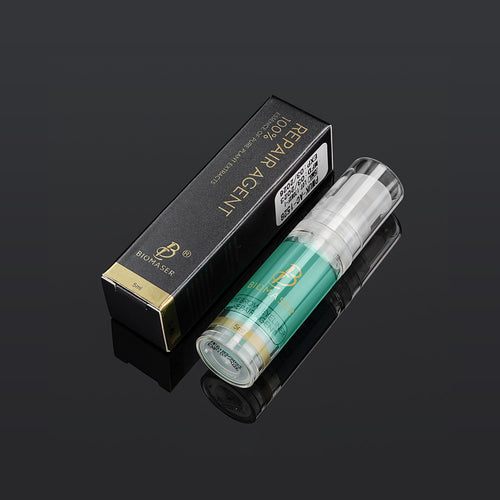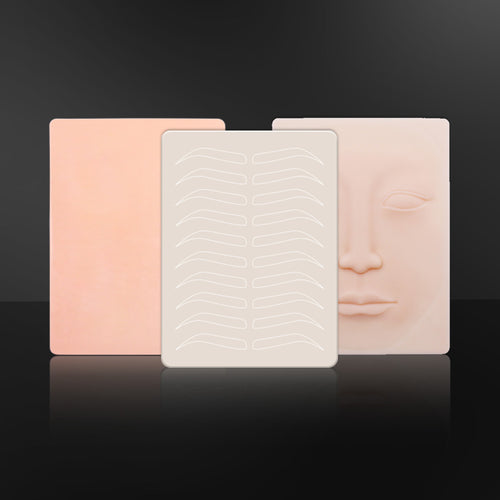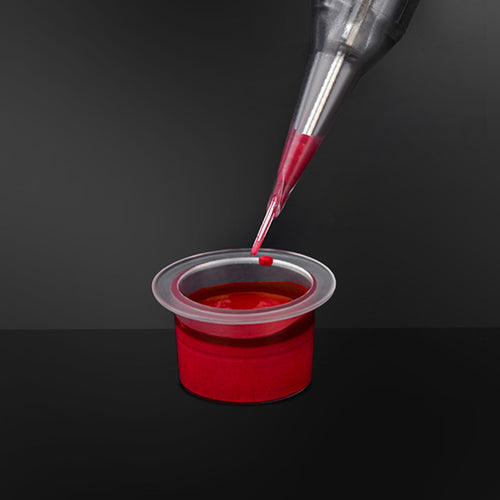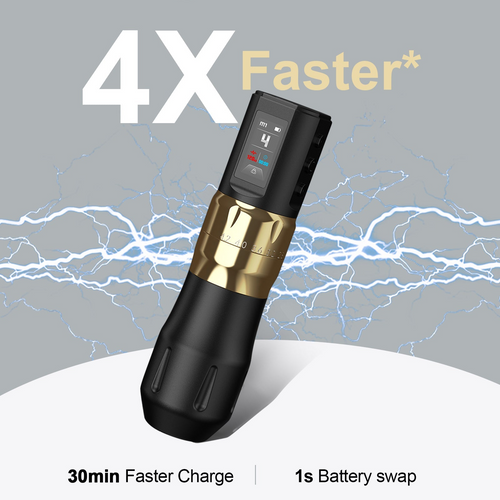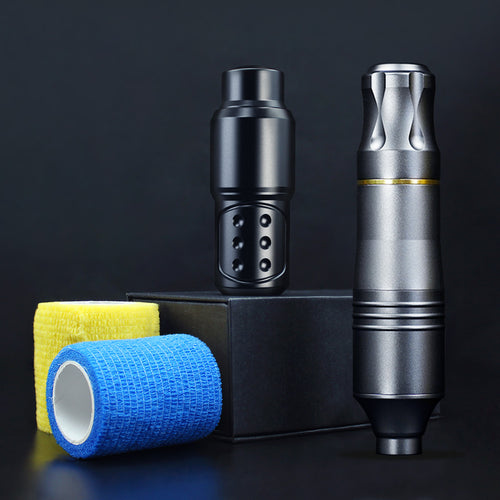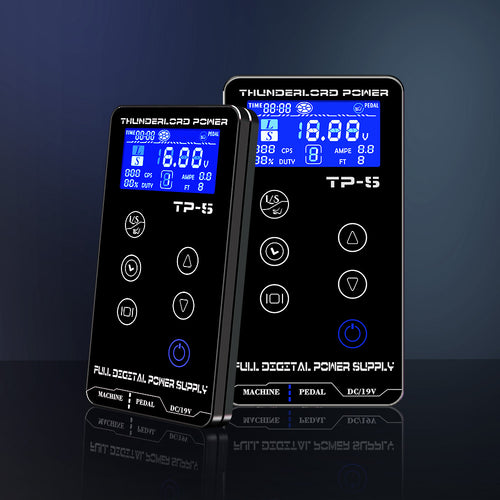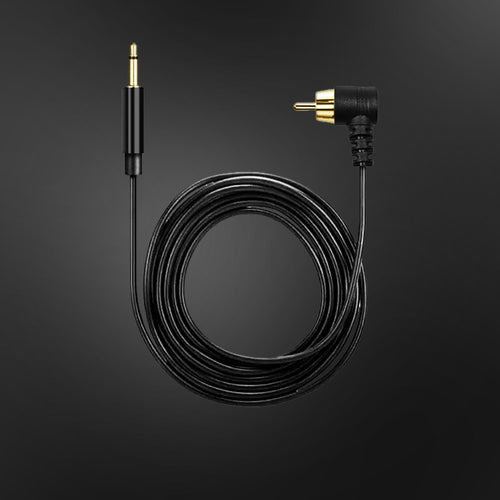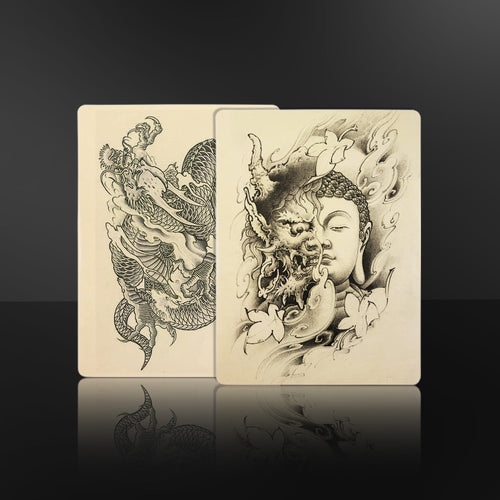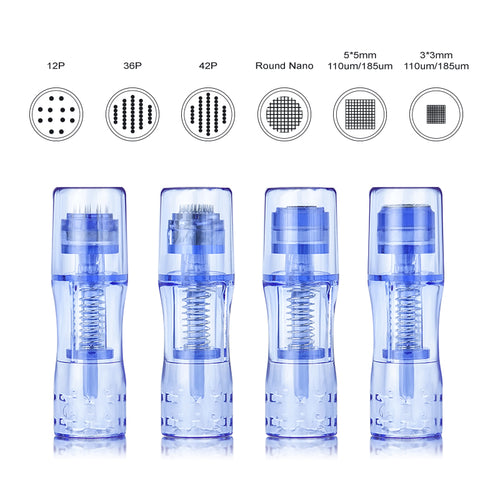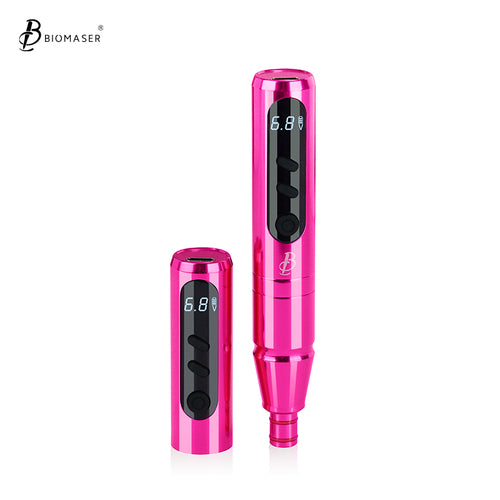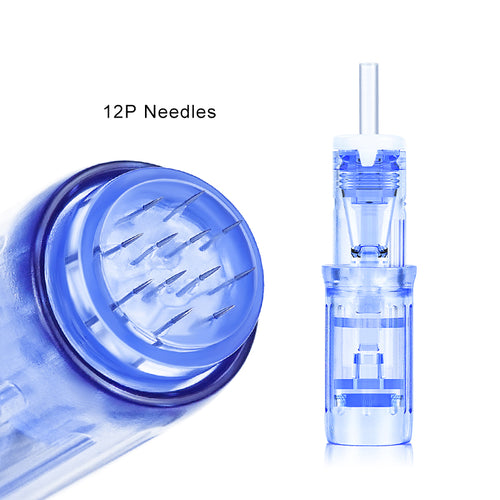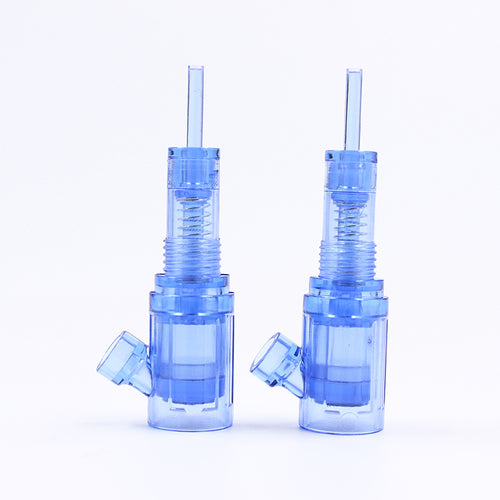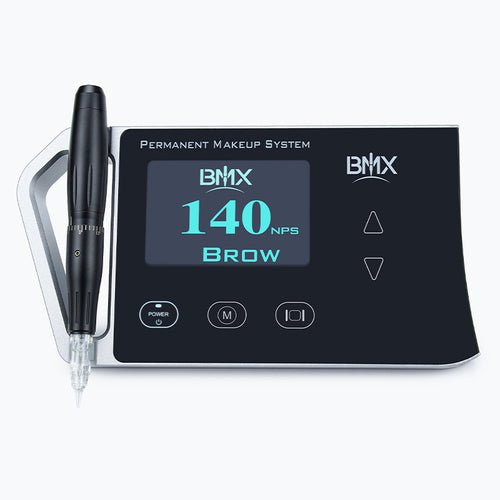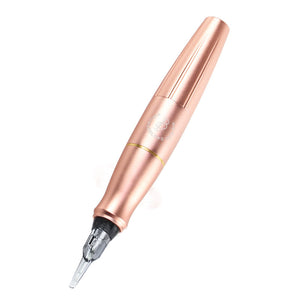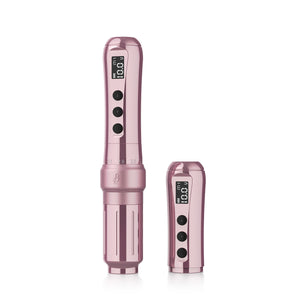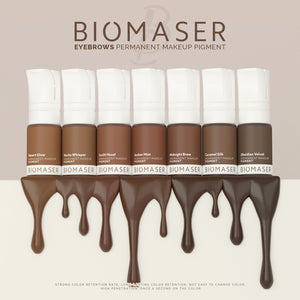Fine Line Tattoos: What You Need to Know
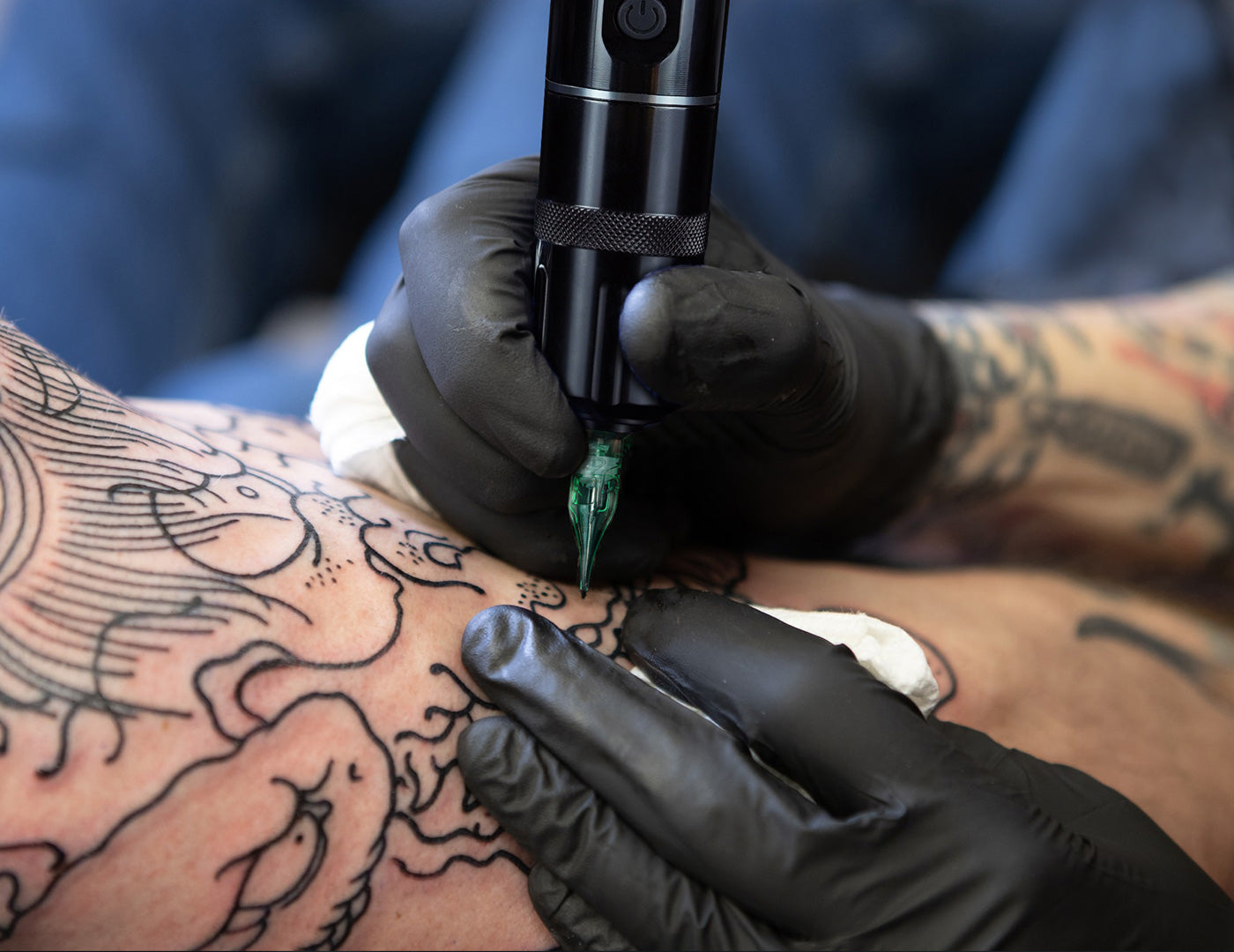
Fine line tattoos are recognized for their crisp, clean lines that skip out on the heavy shadows or bold colors seen in other tattoo styles. These designs are all about being understated yet detailed, creating a look that seems effortlessly sketched onto the skin with a sharp pen. But what else should you know before getting one? This comprehensive guide will cover all the information for you to learn, including their evolution, trending designs, ideal placements, essential considerations, and maintenance tips.
3mm stroke Tattoo Machine Double head Tattoo permanent makeup CTGE004
History and Evolution of Fine Line Technique
Origins
Sharp tools have been used through centuries and around the world to create these symbols and images etched into skin, today's single needle technique being a development on that foundation. These early tattoos often signified social status, served as rites of passage, or acted as talismans. Fast forward to the 20th century, when this tradition intersected with the rise of Chicano culture in Los Angeles, where artists within the Latino community began to tell stories through skin using finely detailed lines.
Influence
As cultural narratives evolved, so too did the fine line technique. Influences from different art movements seeped into the craft, bringing along a penchant for minimalism that resonated deeply within an increasingly cluttered world. Fine line tattoos also absorbed elements from realism, surrealism, and abstract art, making the style a melting pot of historical significance and contemporary aesthetics.
Modern Trends
Modern fine line tattoos marry tradition with innovation; artists push the boundaries by experimenting with shading, color, and even blending techniques to achieve gradients and textures that challenge the expectations of what fine lines can do.
Why Do People Choose Fine Line Tattoos?
Aesthetic Appeal
Fine line tattoos are often chosen for their subtlety and elegance. The thin lines create a delicate appearance that can be both understated and sophisticated, making them suitable for various personal styles and occasions. These tattoos can range from simple geometric shapes to intricate designs and detailed portraits. The versatility in design allows for a wide range of creative expression while maintaining a minimalist look.

Detail and Precision
Fine line tattoos require a high level of skill and precision, making them a preferred choice for those who appreciate detailed and intricate artwork. The fine lines allow for elaborate designs that are clean and sharp.
Subtlety and Discreetness
Many people choose fine line tattoos for their personal significance. These tattoos can serve as intimate reminders of meaningful events, people, or philosophies, without drawing too much attention. For individuals who need to maintain a professional appearance, fine line tattoos offer a more discreet option. Their subtlety makes them less noticeable, allowing wearers to easily conceal them if necessary.
Biomaser U1 Wireless PMU Tattoo Machine Eyebrows & Lips
Less Painful Experience
Due to the use of single needles or smaller needle groups, fine line tattoos are generally less painful compared to traditional tattoos that use larger needle configurations. This makes them an attractive option for those who are sensitive to pain or getting their first tattoo. They often require less time to complete, especially for smaller designs. Shorter sessions mean less time under the needle, which can be a relief for those with low pain tolerance.For enhanced precision and minimal discomfort in your tattoo or microneedling procedures, check out the Thunderlord Power microneedling device. This advanced tool provides exceptional results while maintaining comfort throughout the process.
Quicker Healing
Fine line tattoos generally heal faster than larger, more complex tattoos. The minimal skin trauma and reduced ink saturation contribute to a quicker and smoother healing process. There is a lower risk of infection, provided proper aftercare is followed.
Less Commitment
Many fine line tattoos are smaller in size, which can be less daunting for those new to tattoos. Smaller tattoos also mean that if tastes change over time, they are easier to cover up or integrate into larger designs. Should someone decide to remove or alter their tattoo, fine line designs are typically easier to laser off due to their lighter ink density and smaller size.
Popular Fine Line Tattoo Designs and Ideal Placements
Trending Fine Line Tattoo Designs
Fine line tattoos may be minimalist in nature, but the possibilities for design are endless. Let's explore some of the most popular motifs and patterns that have captured the hearts and skins of individuals around the globe.
- Floral and Botanical Designs
- Geometric Shapes and Patterns
- Animals and Wildlife
- Celestial Themes
- Nature and Landscape
- Symbols and Icons
- Text and Script
- Abstract and Artistic Designs
- Cultural and Traditional Designs
- Mythical and Fantasy Elements

Ideal Body Placements for Fine Line Tattoos
The location of your tattoo can affect both its appearance and your experience. Here are some spots where fine line tattoos particularly shine:
- Wrists
- Ankles and Feet
- Behind the Ear
- Inner Lip
- Fingers
- Collarbone
- Inner Arm
- Shoulder Blades
- Behind the Neck
Considerations Before Getting a Fine Line Tattoo
Before committing to a fine line tattoo, it's essential to consider all angles.
Doing Your Homework
Start with thorough research to ensure you're ready for this permanent addition. Acknowledge that a tattoo is for life. Consider how your tastes might change and how the tattoo may age over time. Look for an artist who specializes in fine line work and has a quality portfolio to show for it. Check reviews and visit the studio to ensure it meets high standards of cleanliness.
Health and Safety Precautions
Only get tattooed at licensed parlors that follow health guidelines to decrease the risk of complications. Confirm that the studio follows strict sterilization protocols and that artists use single-use needles.
Budgeting for Your Tattoo
Size, detail, and location all play into the pricing of a tattoo. Additionally, the reputation and location of the studio can influence cost. Ensure you have a clear understanding of the total price before committing. Fine line tattoos may require touch-ups over the years to maintain their crisp appearance, which can add to the long-term cost. Furthermore, it’s wise to consider the potential expense of removal should your preferences change.
The Psychological Preparedness
Beyond the physical commitment, it’s important to be psychologically ready for a new tattoo. It’s normal to feel some apprehension about getting a tattoo. Talk through these feelings and perhaps start with a small, easily concealable design. Consider the societal and professional implications of your tattoo, especially if it’s in a visible place. Will it affect job opportunities? Are you comfortable explaining its meaning?
Legal and Age Considerations
Tattoo laws vary, with different age consent requirements and regulations. It’s critical to understand and adhere to the legal standards set in your region. Many places require parental consent for tattoos if under a certain age, typically 18. Always check local laws to ensure compliance.
Biomaser P70 Mini Portable Permanent Makeup Power Supply
How to Care for Your New Fine Line Tattoo?
Immediately After Getting Your Tattoo
Your artist will cover your tattoo with a bandage or plastic wrap. Leave this on for as long as your artist suggests, which is typically a few hours. Once you remove the bandage, wash your hands first, and then gently cleanse the tattoo using lukewarm water and mild, fragrance-free soap. Do not scrub; use your hands to lightly apply the soap. After cleaning, pat the tattoo dry with a clean paper towel. Don’t rub it, as this can irritate the skin. Use a small amount of ointment that your artist recommends—typically something like petroleum jelly or a specific tattoo-aftercare product. Apply a very thin layer to ensure the tattoo doesn't get too moist.
During the Healing Process
Keep the tattoo moisturized with a fragrance-free lotion or specialized tattoo aftercare cream. Apply it 2-3 times a day, ensuring the skin isn't overly soaked with lotion and can still breathe. Do not submerge your tattoo in water (like in pools, hot tubs, or baths) until it fully heals, which usually takes about two weeks. Showers are fine, but keep them brief and avoid direct streams of water on your new tattoo. Keep your new tattoo out of sunlight. Once it’s healed, apply sunscreen to the tattoo to protect it from UV rays, which can fade the ink over time. Wear loose-fitting clothes around your tattoo to prevent irritation and allow the skin to breathe and heal. As your tattoo heals, it will start to scab and peel. It's important not to pick at it or scratch it, as doing so can damage the design and lead to infections. Keep an eye on your tattoo for signs of infection, like excessive redness, swelling, or a foul odor. If you experience these symptoms, contact a healthcare provider immediately.For optimal healing and care of your new tattoo, consider using specialized products designed to support skin recovery. PMU Aftercare offers a range of high-quality aftercare solutions to keep your tattoo in top condition throughout the healing process.
Long-Term Care
Even after healing, keeping your skin moisturized will help keep your tattoo looking sharp and vibrant. Continuously protect your tattoo from sun exposure by applying a high SPF sunscreen to prevent fading.
[[related_products_6]]
Conclusion
If you're leaning towards a more understated style, are new to tattoos and want something less daunting, or just like the idea of an easier healing process, fine line tattoos could be the ideal option for you. Starting this tattoo adventure means choosing the right artist, thinking about the placement, and committing to proper aftercare. Take your time to make these decisions—it's not a race. Plan well, and welcome to the enduring world of fine line tattoos.
